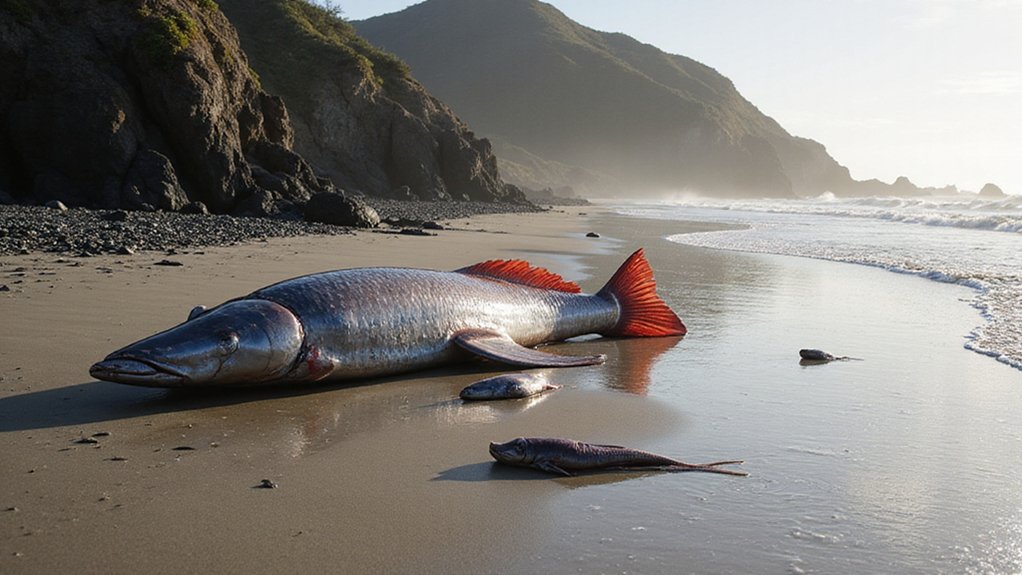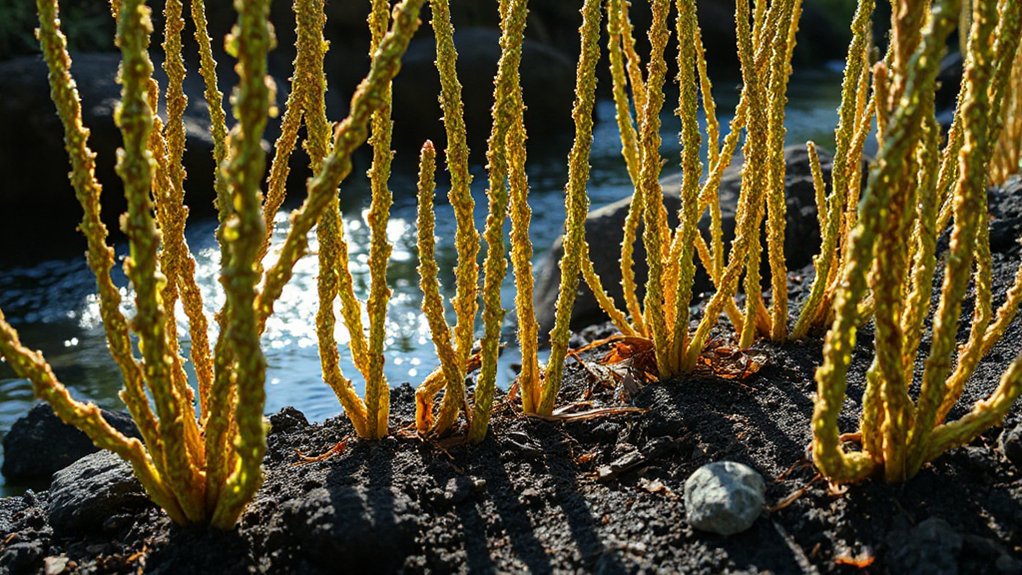What has been lurking in the deep ocean is now making rare appearances along Pacific coastlines. Three massive oarfish, often called the longest bony fish in the world, have washed ashore in recent months. These unusual strandings happened in Baja California Sur and along California’s coast, including a rare short-crested oarfish discovered at La Jolla Cove in August 2024.
These ribbon-like creatures can reach lengths of up to 30 feet. They’re easily recognized by their silvery skin and bright red dorsal fin that runs along their entire body. Oarfish typically live at ocean depths between 200 and 1,000 meters, which explains why humans rarely see them alive.
Scientists conducted detailed necropsies on the specimens to learn more about these mysterious deep-sea dwellers. The oarfish move through water using an undulating motion of their dorsal fin while keeping their body straight. They’ve been observed swimming in a vertical position, possibly to help them detect prey.
These fish feed mainly on plankton, small crustaceans, and squid. They use specialized gill rakers to filter food from the water. Some specimens examined had thousands of krill in their stomachs.
In Japanese folklore, oarfish are known as “doomsday fish” or “earthquake fish” because of a belief they can predict natural disasters. However, a 2019 scientific assessment found no evidence linking oarfish appearances to seismic activity. Experts suggest these fish likely surface when they’re injured or dying.
Since 1901, approximately 20 oarfish have been documented washing up in California. The recent La Jolla specimen was collected by a team of kayakers and snorkelers who helped transport it to NOAA Fisheries for scientific examination. Another unusual series of strandings occurred in Japan between December 2009 and March 2010.
Each rare stranding provides scientists with valuable opportunities to study these elusive creatures. Despite public fascination, these fish have no commercial value due to their deep-water habitat and unpalatable meat quality. The recent appearances have sparked renewed public interest, with temporary exhibits at aquariums capitalizing on the educational value of these findings.
For now, the oarfish continues to captivate our imagination as one of the ocean’s most mysterious inhabitants.
References
- https://www.floridamuseum.ufl.edu/discover-fish/species-profiles/oarfish/
- https://today.ucsd.edu/story/fish-experts-study-rare-deep-sea-oarfish-in-the-lab
- https://en.wikipedia.org/wiki/Oarfish
- https://www.jpost.com/science/science-around-the-world/article-829578
- https://aiep.pensoft.net/article/148496/list/9/









